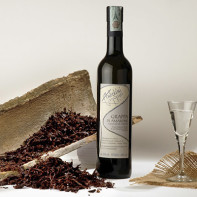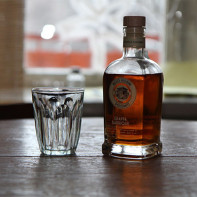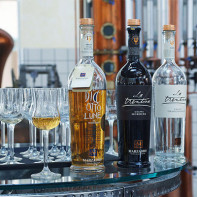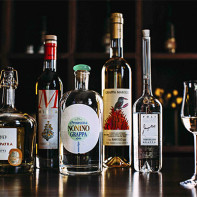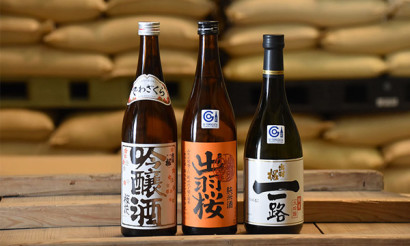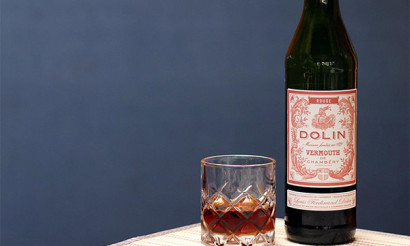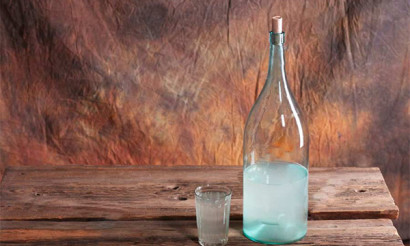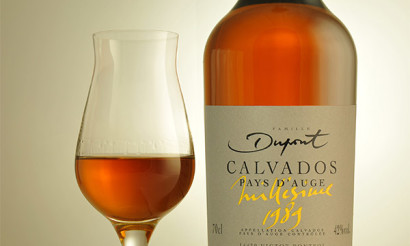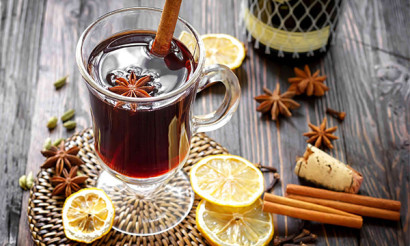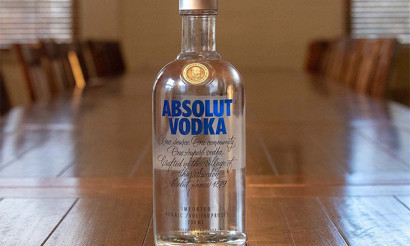How to drink grappa
Grappa is an alcoholic beverage made from grapes with a strength of 36 to 55 degrees, which is classified as brandy. There are two versions regarding the origin of the name. The first suggests that it goes back to the word "graspa", which in the Italian region of Veneto means "vine." The second claims that the name grappa received from the name of the province of Bassano del Grappa. But neither one nor the other is officially confirmed.
- What is grappa
- Views
- Composition and calorie content
- How to drink grappa
- Grappa cocktails: recipes
- Italian wife
- Clover
- Grappa Manhattan
- Grappato
- Venetian sunset
- Classics of the genre
- Julep
- Groll Valdostan
- Citrus
- Dolce
- Italian boarding
- Mint grape
- How to make grappa at home
- The benefits and harms of grappa
What is grappa
Grappa is an alcoholic beverage made from grape meal left over after squeezing wine juice. Despite her, frankly, non-aristocratic origin, she managed to conquer the whole world thanks to the original bright taste.
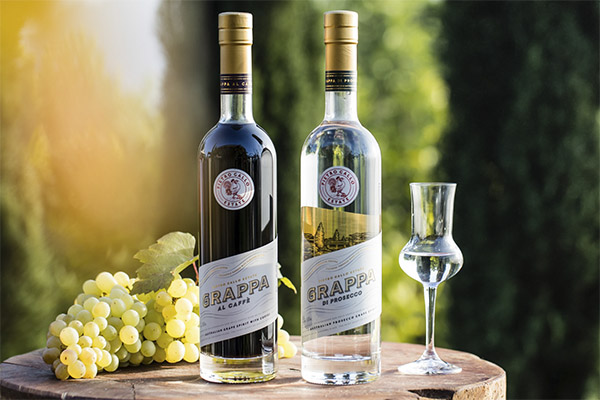
According to existing legend, even in the first century of our era, a Roman legionary, returning to his native land from Egypt, stole the distillation apparatus, which became the progenitor of grappa. That legionary received the first distillate from grape meal.
But a real revolution in the history of the drink was the first Nardini distillery, which appeared in 1779 in the town of Bassano del Grappa. At the factory, a steam distillation technique was introduced, which still works.
So grappa is obtained by distillation of grape marc. Moreover, although it is classified as a brandy, grappa cannot be considered as such 100%. For the production of brandy, grape must is used, and it is made from oilcake or pulp.
To get quality grappa, you need to take quality raw materials. As a rule, pulp is used for this after making red wine. Cake passes through the fermentation process in the wort, as a result it contains alcohol and a small amount of sugar, so it does not require additional preparation.
Using waste from white and rosé wines is also possible. Squeezes from white wine do not participate in fermentation, so they have a lot of sugar and no alcohol, and pink pulp is involved, but not for long. This is not enough to use it immediately for the production of grappa, so both of these types of squeezes are fermented before being put into business. To obtain grappa of the highest quality, seeds are removed from the pulp.
For more than half a century, Italian manufacturers have been using automated distillation methods. In modern factories there are distillers - devices from 3 interconnected apparatuses in the form of a cone. Distillation in them is continuous. But a number of manufacturers believe that a drink obtained with an intermittent or batch cycle has the best quality, and therefore continues to use the old-fashioned ways.
The product exiting the distiller has a strength of 68–85 degrees. To the characteristic grappa 36–55 degrees, it is brought with distilled or demineralized water.
The next stage of preparation is aging, after which the product is filtered, cleaning from impurities of oils. It turns out a transparent and clean drink, in fact it is already a young grappa. Then it is bottled or sent for ripening, for which large wooden barrels of 225 liters are used.
From what wood the barrels are made, ultimately, what grappa will be. Typically, the drink matures in containers of oak, ash, acacia and cherry. The lightest is grappa made from cherry barrels, the amber-colored drink is made from oak. Due to the high content of tannins, grappa from oak barrels also has a special and memorable taste. Special connoisseurs note that even the oak variety affects the taste, color and aroma. The type of final product obtained depends on how much time the drink spends in a barrel.
Views
Depending on the age, nature of the raw materials and grape varieties or additional components that give the drink a special aroma, grappa is classified into several types.
By age:
- Giovane (Dzhovane) - a young, not mature grappa. Its second name is bianca (bianca), which means "white", it received for the lack of color. This drink is very aromatic, although it tastes a bit harsh.
- Grappa affinata in legno (affinity in legno) - a drink, aged not less than six months in wooden barrels. Softer than grappa Giovane, it has a light shade of golden color.
- Invecchia (invekkyata) - such a grappa in a barrel waits for at least a year.
- Stravecchia (Stravecchia), or Riserva (rizerva) - to get such grappa, it must be kept in a barrel for a year and a half, at least. This is the oldest drink, it has a bright, rich taste with notes of wood and a rich aroma. For a long stay in a barrel such grappa acquires a golden color.
By the nature of the raw materials:
- Monovitigno (olivitinho) - grappa made from oilcake, which included more than 85% of one variety, and its name is always written on the label - for example, Pinot Gris, Chardonnay, Torcolato, Nebbiolo, Muscat, Teroldego, Cabernet, Sauvignon, etc. .
- Polivitigno (polyvitinho) - grapes of different varieties are contained in the feedstock for this grappa, as a rule, it differs in terms of ripening and harvesting time, as well as in the method of winemaking.
Taste:
- Aromatica (aromatics) - this grappa is not for nothing called aromatic, because it was used for the production of raw Muscat or Proseco grapes, which are considered the most aromatic.
- Aromatizzata (flavor) - flavored grappa. She got this name because she insists on natural flavors - berries (strawberries or black currants), nuts (almonds), fruits, spices (cinnamon), herbs.
Typically, the label indicates the region where the grappa comes from. It is believed that the best drinks are made in Friuli and Venice, those brought from Piedmont, Trentino and Tuscany are recognized as not bad.
Composition and calorie content
Grappa, like any other alcoholic drink, does not apply to low-calorie foods, rather the opposite. Like all strong alcohol, it is quite high in calories: 100 ml contains 224 kcal. In addition, it is absorbed very well, as it consists mainly of ethyl alcohol, which begins to be absorbed into the blood already in the mouth. But the body does not really benefit from it, because of the nutrients in the grappa, only carbohydrates are present: 2 g in a 100-gram glass. So for people puzzled by the problem of losing weight, grappa is hardly suitable.
How to drink grappa
In using grappa, you need to clearly distinguish between the goal: tasting is one thing, and a warm evening with friends is another.
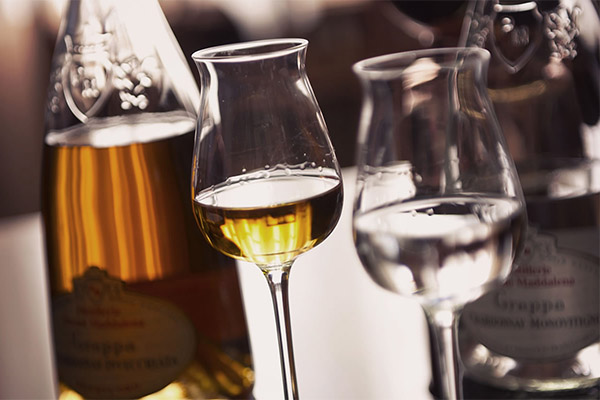
Tasting is a delicate process. It requires compliance with a number of conditions. In particular, professionals recommend tasting the drink in a bright room, where extraneous sounds do not arrive - so that nothing would interfere with focusing on the contents of the glass. On the day of tasting, it is better not to smoke, not to use perfume, not to eat anything sharp, salty, spicy or sour, and not to drink carbonated drinks and herbal tea.
You need to start the tasting with a drink of a younger one, after which you can taste the aromatic one and complete the process with a mature one. The best temperature for grappa is from 9 to 13 degrees, for aged - 17 degrees. The correct glass is considered to be crystal or made of clear glass and having the shape of a tulip with a height of 10 to 15 cm. It has a narrow neck with an open top, as a result of which the aroma is released gradually. But it is not forbidden to use glasses for cognac.
In general, grappa is a typical digestif, that is, a drink that is served after a meal. They drink it a little, in small doses it helps digestion. Diluting grappa is not recommended unless it is used to make cocktails.
If you follow all the rules, then you can serve grappa with vases of fruit, especially with oranges, plates with cheese, pistachios, olives, seafood, canapes with cheese and grapes, or with ham, sauce and bread.It’s good to serve dark chocolate, coffee, ice cream, even small cakes. This is how grappa is presented in restaurants, bars and social events in Italy.
But the same Italians at feasts passing in a narrow friendly circle use it like Russian vodka with a good, satisfying snack. Many people think that ravioli - that is, almost Russian dumplings - is what is needed for this strong drink. If you gathered with your friends to eat barbecue - great! You can add grappa to the marinade, and then bite a glass of grape vodka with roasted meat on the fire. By the way, lamb goes well with grappa, as, indeed, various meat delicacies.
Connoisseurs of various pastas can also quite safely bite an alcoholic drink with their favorite dish.
The Italians came up with the option of using grappa as a dessert. To do this, it is soaked in fruit, which is then watered with syrup. They serve such a dish in the evening, after dinner. At the bottom of each glass with a wide bottom, put fruits in syrup and pour them with grappa. At the end, have a snack with the remaining aromatic fruits.
Grappa cocktails: recipes
Italian wife
Mix with a shaker 10 ml of freshly squeezed lemon juice, 40 ml of grappa, 5 ml of Blue Curacao liquor. Pour a cocktail into a glass. The color of the finished drink turns divine - pale blue.
Clover
Stir in a shaker 30 ml grappa, 20 ml freshly squeezed lemon juice, egg white and 10 ml strawberry liquor (can be replaced with the same amount of strawberry syrup). Pour the mixture into a glass filled with crushed ice. Garnish with strawberries.
Grappa Manhattan
This is one version of the widely acclaimed classic Manhattan, but grappa is used instead of bourbon. The taste of grappa is felt quite noticeably, vermouth - not really, but you should not pour more, you can easily overdo it. Angostura tincture can be dripped a little more, but not much. The creators of the recipe claim that this cocktail is intended for those who are strong in spirit.
Stir in a shaker with ice 50 ml grappa, 25 ml red vermouth, 1-2 dash (or simply scoop from the dispenser) tinctures of an angostur. Pour into a martini glass. Garnish this cocktail with a cherry.
Grappato
The amaretto used here makes the cocktail much sweeter, the contrast with the sharp taste of grappa is quite unusual.
Stir in a shaker with ice 50 ml grappa and 15 ml amaretto. Pour into a glass, garnish with a cherry.
Venetian sunset
The taste of this cocktail is refreshing, but the sharpness of the grappa is quite well felt. A campari adds a touch of pleasant bitterness.
Stir 50 ml grappa and 150 ml orange juice in a shaker, pour into a glass filled with crushed ice, add campari.
Classics of the genre
Absolutely uncomplicated cocktail, but very tasty, because a sharp aftertaste is completely veiled in it. At the same time, grappa in a duet with an angostura does not let the syrupy sweet sound too loud, and as a result a very pleasant taste comes out - without cloying and harsh.
Pour into a glass 20 ml of sugar syrup, 50 ml of grappa and tincture of angostura - 1-2 dash (in a simple way, plop from the dispenser). Add finely crushed ice.
Julep
They argue about this drink: is it a cocktail or not? Connoisseurs break spears over this question, but no one refutes the fact that it is really tasty.
Rub in a glass with a spoon 2 leaves of mint either with sugar or with powdered sugar. How much sugar to add, each determines for himself - this is the value of the recipe. Add finely divided ice to the same glass and pour 50 ml of grappa.
Groll Valdostan
The recipe for this drink came to our days from the Middle Ages. Groll was called wooden vessels with a spout, of which at that time they drank this drink, passing it to each other, sitting around the hearth on long cold winter nights. Groll Waldostan is an excellent warming tool for talking, planning a future day, discussing children's progress, watching a good movie together or reading a good book.
You need to take 2 tablespoons of white grappa and the same amount of red wine, add 4 teaspoons of Geneli liquor and the same amount of orange punch or Cointreau, 3 teaspoons of sugar (better if there is cane), 4-5 clove inflorescences, coffee bean, 5– 6 juniper berries and some orange or lemon zest.
All ingredients are placed in a saucepan and put on a gentle fire. Bring to a boil and, since the groll is currently unlikely to be found, pour the resulting hot cocktail into modern thermo mugs. A pleasant warm evening is provided!
Citrus
Pleasant acidity and delicate sweetness - these delicious features make the cocktail very tasty. It is prepared immediately in a triangular martini glass.
Pour in it orange and grapefruit juice (50 ml each) and add grappa. Garnish the glass with a thin slice of orange.
Dolce
This cocktail will delight you with pleasant sweetness and freshness - even on a summer day.
Mix grappa (40 ml), pear syrup and pear liquor (20 ml each) in a shaker, add 5-6 drops of squeezed lemon juice. Pour into a glass and garnish with a slice of lemon. Drinking it is recommended from a thin tube.
Italian boarding
Mix grappa (40 ml) in a shaker with peach syrup and juice squeezed from lemon (20 ml each).
Pour the resulting cocktail into a glass and sprinkle with orange peel for decoration.
Mint grape
It is necessary to take grappa (40 ml), peppermint liquor (20 ml), add ice cubes (2-3) and mix these components in a shaker. Pour the resulting cocktail into a glass and decorate it with mint leaves.
How to make grappa at home
Since grappa historically began with home production, you can try to reproduce it with your own hands. You can buy grapes of one variety and color for this business, or experiment and combine berries of different varieties and colors. If the grapes grow in their own suburban area - great! For the preparation of grape vodka (as grappa is sometimes called in everyday life), not fully ripened berries grown in the middle lane are suitable.

So, starting to make grappa, you need to prepare grapes - in such quantity that you get 1 kilogram of oilcake from it. How much grapes will be needed for this depends on the variety, condition of the brush and degree of maturity. Will have to achieve this empirically.
For 1 kilogram of cake, take the same amount of sugar, 5 liters of water and wine yeast. The amount of yeast is calculated from the dosage indicated on their packaging.
Then squeeze the grapes, you can simply through cheesecloth. You can drink the juice, and put the mash on the remaining cake: heat the water to a temperature of 35–36 degrees, dissolve sugar in it, put the squeezes and yeast there. Mix the resulting mass well, cover and leave to ripen. Every day it must be mixed 2-3 times.
Mash roams for at least 4 days, maybe even more, it all depends on the type of yeast. The following signs indicate its readiness: the foaming has stopped, the foam has “gone”, the liquid itself has begun to lighten, a precipitate has appeared at the bottom, the taste of mash has become bitter.
When the mash is ripe, it must be filtered and distilled on the distiller twice. It will make grape moonshine, now it can be poured into oak barrels and sent to the basement for long-term storage - for at least six months.
If there is no barrel, but there is a desire to experiment, you can prepare an excellent version of grappa in the apartment. The first option is to use oak chips for infusion. This, of course, is not a barrel, but it also gives very good results. The second is to add fruit to the moonshine. There is a third option - use wood chips first, and then insist on fruits.
Maybe the idea will be born to use some especially favorite herbs or spices - complete freedom for creativity!
The benefits and harms of grappa
The water of life is what grappa was called in ancient times, and this makes sense from the point of view of modernity.So, this alcoholic drink is able to warm a frozen person in the shortest possible time, only 50 ml contribute to the expansion of blood vessels and accelerate blood circulation. But in the cold, you can’t drink alcohol, since heat transfer also increases, that is, heat leaves the body. Arriving home cold and, in addition, wet, with a small glass of grappa, you can insure yourself against a possible cold.
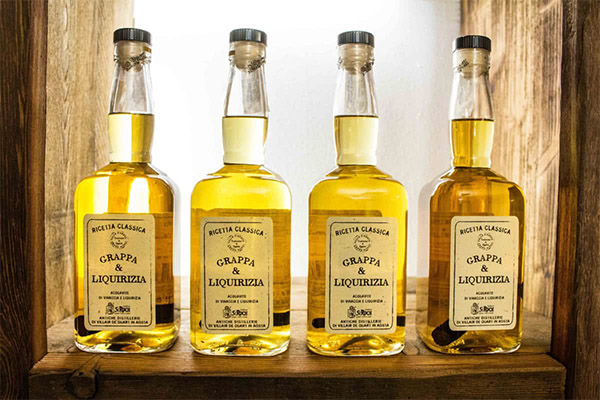
Since grappa is a strong drink, it is quite suitable for disinfecting cuts, scratches, abrasions, as well as for preparing medicinal tinctures.
For insomnia
For such a tincture you will need a glass of grappa and 2 tablespoons of hop cones. Grind the cones, pour a drink and send to infuse for 10 days. From insomnia or with overexcitation, drink 15 drops 2 times a day.
Against migraine
Orange tincture will help with migraines and relieve headaches. You need to take a pound of oranges, 100 grams of horseradish root, 1 kilogram of granulated sugar and half a liter of grappa. Finely chop the oranges, rub the horseradish on a fine grater or scroll in a meat grinder. Combine both components, mix, add granulated sugar and pour in grappa diluted with boiled water in a 1: 1 ratio. Put the resulting composition in a pan in a water bath and cover. Keep an hour in a water bath so that the sugar is completely dissolved. Remove from heat and cool, then strain and drink once a day 2 hours after eating a third of a glass.
Grappa is also used in cooking as one of the components of marinade for fish or meat, as well as in Italian cuisine for flaming shrimp or meat.
Since grappa is a strong alcoholic drink, it is contraindicated for those who suffer from diseases of the gastrointestinal tract, nervous and cardiovascular systems. For the same reason, you can not drink grappa for children and adolescents, pregnant women and women who are breastfeeding.
«Important: all information on the site is provided exclusively in fact-finding purposes. Before applying any recommendations, consult with a profile specialist. Neither the editors nor the authors are liable for any possible harm caused materials. "

